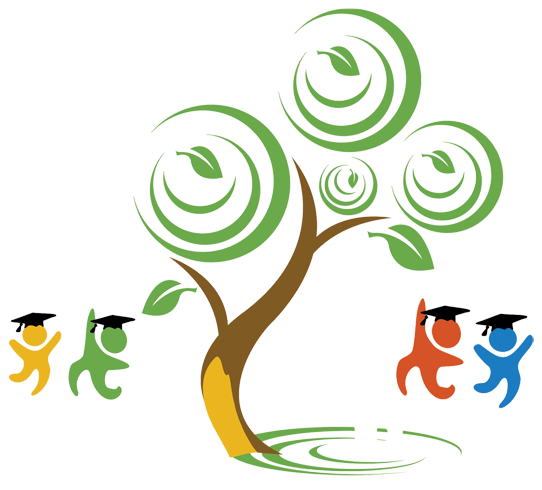
Helping families in
Riverside
,La Sierra
, andCorona
establish healthy daytime sleep routinesAs any parent or caregiver in Riverside knows, getting toddlers to nap during the day can feel like an impossible challenge. At Sierra Preschool, serving families throughout
Riverside
,La Sierra
, andCorona
, we’ve mastered the art of peaceful afternoon naps through our comprehensive Montessori approach. After years of experience helping hundreds of toddlers develop healthy sleep habits, we’re sharing our proven strategies to help your little one embrace daytime rest.Why Daytime Naps Are Essential for Toddler Development
Before diving into techniques, it’s crucial to understand why naps matter so much for your toddler’s overall development. Research consistently shows that toddlers who maintain regular nap schedules demonstrate:
- Enhanced cognitive development and improved memory consolidation
- Better emotional regulation and fewer behavioral challenges
- Stronger immune system function and physical growth
- Improved focus and learning capacity during awake periods
- More positive social interactions with peers and caregivers
At our Riverside Montessori preschool, we observe daily how well-rested children engage more meaningfully with their learning environment and demonstrate greater independence in their activities.
Understanding Toddler Sleep Needs by Age
Ages 12-18 Months
Toddlers in this age group typically need 11-14 hours of total sleep per day, including 1-2 naps. Most children transition from two naps to one during this period. In our Corona location, we’ve found that flexibility during this transition period is key to success.
Ages 18-36 Months
Children this age generally need 11-14 hours of sleep per day with one afternoon nap lasting 1-3 hours. This is the most common age group in our toddler programs across Riverside and La Sierra.
Ages 3-5 Years
Preschoolers need 10-13 hours of sleep per day. While some may still need naps, others begin to outgrow them. Our Montessori approach allows for individual differences in sleep needs.
Creating the Perfect Nap Environment : Sierra Preschool’s Proven Method
1. Establish a Consistent Nap Space
Your toddler’s nap environment should signal “sleep time” immediately. At Sierra Preschool, we’ve optimized our rest areas with:
- Dimmed lighting using blackout curtains or shades
- Comfortable temperature between 68-72°F
- Minimal noise with optional white noise machines
- Familiar comfort items like a special blanket or stuffed animal
- Clean, fresh air with proper ventilation
2. Implement a Predictable Pre-Nap Routine
Consistency is the cornerstone of successful napping. Our Riverside preschool follows this structured approach:
30 minutes before nap :
- Transition to quiet activities (reading, puzzles, gentle music)
- Bathroom break and diaper change
- Light snack if needed (avoid sugary foods)
15 minutes before nap :
- Dimming lights throughout the space
- Quiet cleanup time
- Gathering comfort items
Nap time begins :
- Gentle back rubs or quiet singing
- Consistent verbal cues: “It’s time to rest our bodies”
- Remain calm and patient during the settling process
The Montessori Approach to Daytime Sleep
At Sierra Preschool, we integrate Montessori principles that respect each child’s individual needs while maintaining structure:
Respectful Rest Periods
Even non-sleepers participate in quiet rest time, engaging in calm activities like looking at books or gentle music. This prevents the stress that can arise when children feel forced to sleep.
Natural Sleep Transitions
We avoid abrupt wake-ups, allowing children to transition naturally from sleep to wakefulness when possible.
Timing Your Toddler’s Nap for Success
Optimal Nap Timing
Based on our experience with hundreds of families in the Riverside area :
- 12:00-1:00 PM start time works best for most toddlers
- 1.5-2 hour duration for children 18 months to 3 years
- End by 3:00 PM to preserve nighttime sleep
Signs Your Toddler is Ready for a Nap
Watch for these cues that indicate nap readiness :
- Rubbing eyes or yawning
- Decreased activity level
- Increased clinginess or fussiness
- Loss of interest in toys or activities
- Difficulty following simple instructions
Troubleshooting Common Nap Challenges
“My Toddler Fights Naptime”
Sierra Preschool’s Solution :
- Ensure adequate morning activity and outdoor play time
- Adjust nap timing earlier or later in 15-minute increments
- Create a calming pre-nap ritual that doesn’t change
- Stay consistent even when resistance occurs
- Consider if your child is ready to transition sleep schedules
“Naps Are Too Short”
Our Proven Strategies :
- Wait 5-10 minutes before responding to see if your child settles back to sleep
- Ensure the sleep environment remains optimal throughout the nap
- Consider if your toddler needs a longer wind-down period
- Evaluate if overtiredness is causing short naps
“My Child Won’t Nap at Home But Sleeps at Daycare”
This is incredibly common! At Sierra Preschool, we create an environment where napping is normalized through :
- Peer modeling (seeing other children nap)
- Consistent routine across all children
- Trained staff who remain calm and patient, while aiding children to calm and rest their bodies
- Optimal environment specifically designed for rest
To replicate this at home :
- Maintain the same timing as our preschool schedule
- Create similar environmental conditions
- Stay consistent with routines even on weekends
- Consider having a designated nap space separate from nighttime sleep area
Adapting Nap Routines for Working Parents in Riverside
We understand that many families in our community have varying work schedules. Here’s how to maintain nap consistency:
Weekend Nap Maintenance
- Keep the same nap timing even on days off
- Plan family activities around your toddler’s sleep needs
- Communicate nap schedules with family members and caregivers
Transitioning Between Home and Preschool
- Share our Sierra Preschool nap routine with your home caregivers
- Maintain similar comfort items between environments
- Communicate any sleep challenges with your child’s teachers
When to Modify or Drop the Nap
Signs Your Toddler May Be Outgrowing Naps :
- Consistently taking longer than 30 minutes to fall asleep
- Napping well but having difficulty with nighttime sleep
- Showing no signs of tiredness at usual nap time
- Age 4+ with good nighttime sleep *quiet rest periods may still be required for students ages 3-5 in a preschool classroom
Transitioning Away from Naps :
- Replace nap time with quiet rest period
- Maintain the routine but allow quiet activities
- Monitor for overtiredness and adjust bedtime earlier
- Be flexible during the transition period
The Role of Nutrition in Successful Napping
At Sierra Preschool, we’ve observed how nutrition impacts nap success:
Pre-Nap Nutrition Guidelines :
- If not napping after lunch, offer a light snack 30-60 minutes before nap time
- Choose foods with protein and complex carbohydrates
- Avoid sugary snacks or drinks
- Ensure adequate hydration throughout the morning
Helpful Pre-Nap Snacks :
- Whole grain crackers with cheese
- Apple slices with almond butter
- Plain yogurt with berries
- Warm milk (if not dairy-sensitive)
Supporting Your Toddler’s Nap Success : A Partnership Approach
At Sierra Preschool, we believe successful napping requires partnership between home and school environments. We encourage parents to:
- Communicate regularly about your child’s sleep patterns and challenges
- Maintain consistency between home and preschool routines when possible
- Stay patient during periods of sleep regression or transition
- Celebrate progress rather than focusing on setbacks
Special Considerations for Montessori Environments
Our Montessori approach offers unique advantages for nap success:
Mixed-Age Learning
Younger toddlers naturally learn nap behaviors by observing older children who have mastered rest time routines.
Individual Respect
We honor each child’s sleep needs while maintaining group harmony, teaching children that rest is a personal need that we all respect.
Independence Building
Toddlers learn to recognize their own sleep cues and communicate their needs, building self-awareness and autonomy.
Technology and Screen Time Considerations
Modern parenting often involves managing screen time around sleep. Our recommendations:
- No screens 1-2 hours before nap time
- Use calming music or nature sounds instead of videos
- Create screen-free nap spaces
- Model healthy sleep behaviors yourself
Seasonal Adjustments for Riverside Families
Living in Southern California presents unique considerations:
Summer Considerations:
- Earlier nap times to avoid peak heat
- Ensure adequate air conditioning or fans
- Blackout curtains become more important with longer daylight hours
Winter Adjustments:
- May need later nap times due to less morning light exposure
- Consider light therapy for children who seem to need more sleep
Building Long-Term Healthy Sleep Habits
The nap routines we establish in toddlerhood create foundations for lifelong healthy sleep patterns. At Sierra Preschool, we focus on:
- Teaching self-regulation skills that transfer to nighttime sleep
- Creating positive associations with rest and quiet time
- Building independence in sleep routines
- Respecting individual differences while maintaining structure
When to Seek Professional Support
While most nap challenges resolve with consistency and patience, consider consulting your pediatrician if:
- Your toddler shows signs of sleep disorders
- Dramatic changes in sleep patterns occur suddenly
- Persistent sleep issues affect your child’s development or your family’s wellbeing
- Your child seems chronically overtired despite adequate sleep opportunities
Conclusion : Embracing Peaceful Afternoons
Creating successful nap routines requires patience, consistency, and understanding of your individual toddler’s needs. At Sierra Preschool, we’ve witnessed countless families transform challenging nap times into peaceful rest periods that benefit the entire household.
Remember that every child develops at their own pace, and what works for one toddler may need adjustment for another. The key is maintaining consistency while remaining flexible enough to adapt as your child grows and changes.
If you’re in the Riverside, La Sierra , or Corona area and looking for a preschool that prioritizes your child’s individual needs within a structured, nurturing environment, we invite you to visit Sierra Preschool. Our experienced Montessori educators understand the delicate balance between structure and flexibility that helps children thrive.
For more information about our programs or to schedule a tour, visit us at sierrapreschool.com or contact our Riverside location directly. Sweet dreams start with consistent, loving routines, and we’re here to support your family every step of the way.
Sierra Preschool & After School
provides exceptional
Montessori education
and care for children throughout
Riverside
, La Sierra, and Corona. Our experienced educators specialize in nurturing each child’s individual development within a structured, supportive environment.
